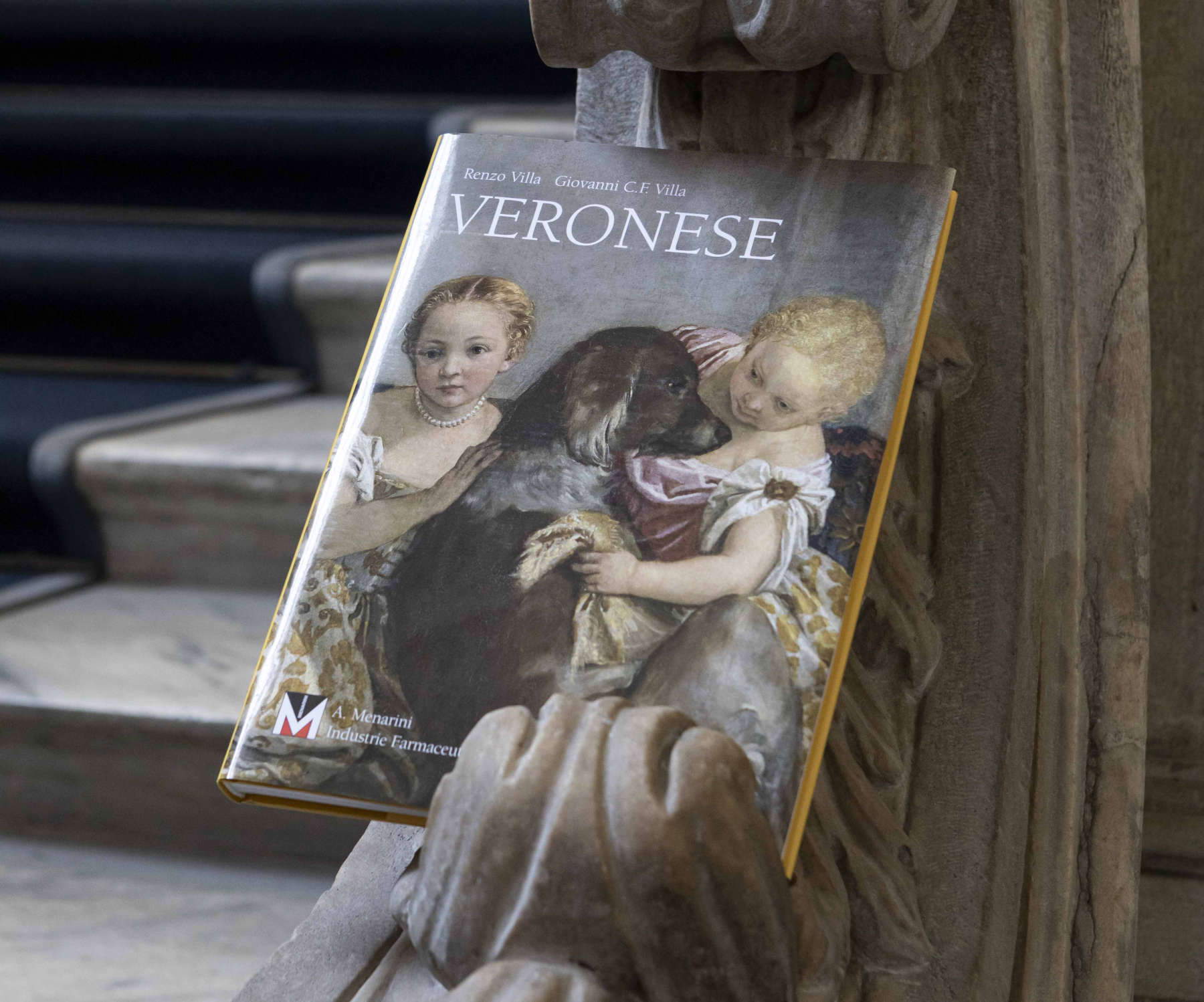Turin, the Menarini Group presents the new Menarini Art Volume, dedicated to Paolo Veronese
The latest volume in the Menarini Group’s prestigious art series, presented Sunday, May 5, at Palazzo Madama in Turin, takes us back to the splendor of the Most Serene Republic, in the splendor of the colors of Venetian painting. The protagonist is Paolo Caliari, better known simply as il Veronese (Verona, 1528 - Venice, April 19, 1588), who together with Titian and Tintoretto composed the triad capable of dominating 16th-century European painting and becoming a model for modernity in painting. The author of the volume is Giovanni Carlo Federico Villa, a scholar of Renaissance Venetian painting and museologist, director of Palazzo Madama - Museo Civico d’Arte Antica in Turin. Over the years, the Menarini Group’s artistic vocation has evolved with the multimedia project Menarini Pills of Art, short videos that have reached 30 million views. In these videos, experts in the field narrate anecdotes and curiosities about the works featured in the Menarini Volumes of Art. The project includes more than 700 pieces of content available on Menarini’s YouTube channel, translated into eight languages.
“Veronese is the artist who interpreted, narrated and inaugurated the 16th century as a painter of figures and architecture, a draughtsman and colorist without equal,” explains Villa “His lesson has spanned the centuries, appreciated and understood by all those who sought to color the emotion of the world, narrating human action on the stage of the Theater of Life. He was the least Venetian, the most ’Italian’ among the painters who left their mark on the lagoon. Because ’foresto,’ born, raised and trained in a city that leans against the hills and looks out over the plains, he received moods and messages of art from the lands of Lombardy and Emilia, cultivated classicism and experimented with invention.”
“With Veronese, the journey that Menarini began in 1956, when the first of its Volumi d’Arte went to press,” say Lucia and Alberto Giovanni Aleotti, shareholders and members of the Board of Menarini, “The pursuit of beauty and the dissemination of culture are foundations of civilization and collective growth, and we are convinced that art and science are an inseparable partnership for the progress and future of the younger generations.”
Notes on the artist
Paolo Caliari, known as the Veronese was born in Verona in 1528 and died in Venice in 1588, where he carried out most of his activity. Particularly famous for his large-scale paintings of religious and mythological subjects, such as Wedding at Cana (1563), Banquet in the House of Levi (1573), and Triumph of Venice (1582), his most famous works are elaborate narrative cycles, executed in a dramatic and colorful style, full of majestic architectural scenery and lavish detail. Especially famous are his large paintings representing biblical feasts, crowded with figures, which he painted for monastery refectories in Venice and Verona.
He was also the leading Venetian ceiling painter. And many of his decorations for palaces and public buildings can still be seen, such as in the Doge’s Palace in Venice, the church of San Sebastiano, and Villa Barbaro. Numerous of his works are preserved in museums, such as portraits. In 1553 he was among the painters called to decorate the new rooms of the Doge’s Palace intended for the Council of Ten, and a few years later he participated in the decoration of the ceiling of the Libreria Marciana. Among Veronese’s best-known inventions are the large choral scenes devoted to Gospel banquets, commonly referred to as “The Suppers.” These are very large canvases in which the Gospel episode is the pretext for staging the sumptuous feasts of the Venetian aristocracy of the time. The banquet generally takes place in large loggias, framed by masterfully reproduced architectural wings that echo the achievements of Andrea Palladio, far removed from the real sites of the Gospel narrative. Everything in these inventions by Veronese is under the banner of opulence, such as the exquisite clothes worn by the characters, who are dressed in the most elegant Venetian fashion of the time. The Dinners series is opened, between 1555 and 1556, by the Supper in the House of Simon the Pharisee, now preserved in the Galleria Sabauda in Turin. This is followed by the famous Wedding at Cana (1563), which Veronese painted for the Benedictines on the Island of San Giorgio Maggiore in Venice and which is now in the Louvre. And even more famous is the last in the series, Convito in casa Levi (1573), now in the Gallerie dell’Accademia in Venice. After the second devastating fire that hit the Doge’s Palace in 1577, Veronese was called upon, along with Tintoretto, to decorate the Sala del Maggior Consiglio once again. There he produced one of his most impressive masterpieces, the immense oval canvas celebrating the Triumph of Venice, adored by the peoples subjected to her. Veronese’s last paintings are characterized by dark atmospheres, with frequent nocturnal scenes and predominantly religious subjects. Drawing was always of central value in his painting, unlike coeval Venetian painting. Significant was his legacy for later developments in painting in the lagoon, where in the late Baroque period masters such as Sebastiano Ricci and even more so Tiepolo took up the example.
 |
| Turin, the Menarini Group presents the new Menarini Art Volume, dedicated to Paolo Veronese |
Warning: the translation into English of the original Italian article was created using automatic tools. We undertake to review all articles, but we do not guarantee the total absence of inaccuracies in the translation due to the program. You can find the original by clicking on the ITA button. If you find any mistake,please contact us.




























